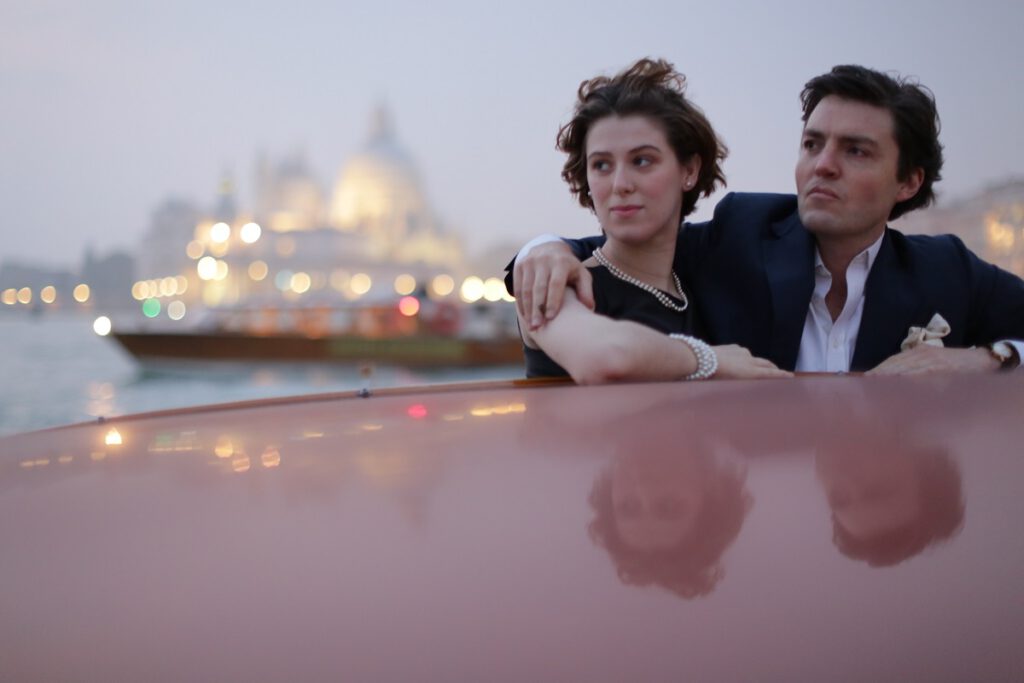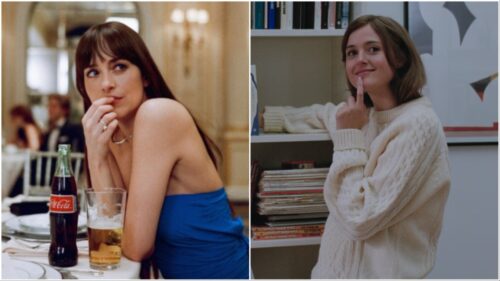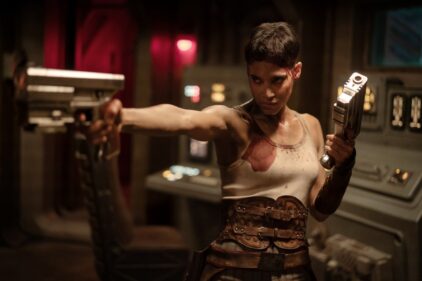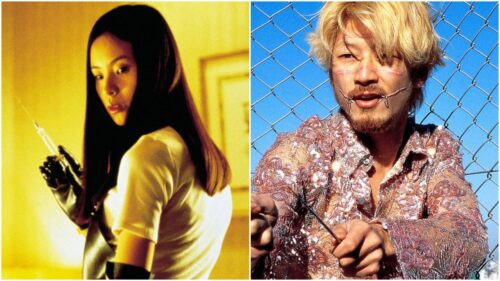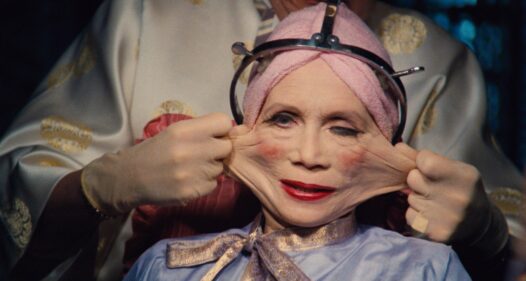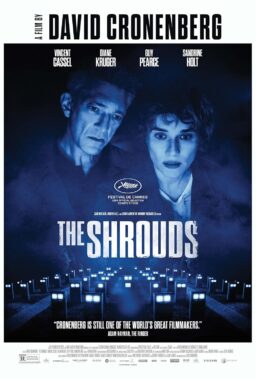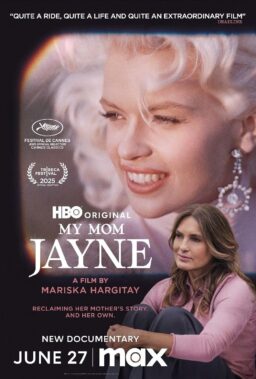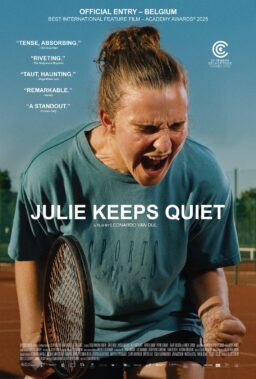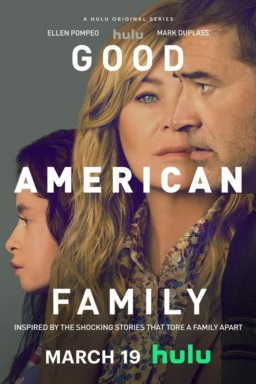We are proud to present an excerpt from Seventh Row’s latest ebook, Tour of Memories: The Creative Process Behind Joanna Hogg’s The Souvenir. The team at Seventh Row have previously released collections of essays on “Call Me By Your Name,” “Lean on Pete,” “Leave No Trace,” “Peterloo,” and “You Were Never Really Here,” which we profiled last year. Their 360 approach to analyzing one film from various angles allows for a deeper analysis than what you often see in the scattershot approach that most websites take to looking at a film. Their latest is on Joanna Hogg’s “The Souvenir,” and is available now.
The excerpt below is from the introduction by Alex Heeney.
I first discovered Joanna Hogg’s work in 2013 as a fan of Tom Hiddleston. Hogg had cast Hiddleston as Oakley in her first feature, Unrelated (2007), not only giving him his first film role, but also directing him in one of his career best performances. In return, he has shone a light on Hogg’s career, drawing international attention to the work of this very talented under-the-radar British filmmaker.
When I first encountered Hogg’s oeuvre, I felt I had stumbled upon films that were made just for me. From Unrelated to The Souvenir (2019), Hogg’s stories about stifling relationships among the British upper-middle class made me squirm at the excruciating discomfort of messy human relationships. Few filmmakers are so adept at using mise-en-scène to show how characters relate to one another. I was in raptures.
Sadly, it has taken more than a decade for Hogg’s films to find the broad audience they deserve, in part because they never screened for cinephiles and critics outside of the U.K. Unrelated skipped the film festival circuit altogether; Archipelago (2010) screened at the London Film Festival before disappearing into obscurity; and Exhibition (2013) premiered at the Karlovy Vary Film Festival and played the London Film Festival. None of these films received theatrical releases in North America, where they only became available on VOD in 2013, thanks to Kino Lorber.
Finally, with Hogg’s fourth feature, The Souvenir, this important filmmaker is starting to get her due. Having already secured a North American and U.K. release, the film premiered at the Sundance Film Festival in January, where it was the talk of the festival and picked up the World Dramatic Jury Prize. It was widely considered to be among the best films that screened there.[1] Hogg has just completed production on the second half of the story, The Souvenir: Part II, which will show Hogg’s autobiographical character, Julie (Honor Swinton-Byrne), coming into her own as a filmmaker and mining her life for her art.
With The Souvenir, Hogg continues to explore her pet topics — the stifling nature of privilege, the awkwardness and foibles of the British upper class, women’s stories, and more. At the same time, the film marks a significant departure from Hogg’s previous work. Where her first three features were contemporary dramas focused on the dynamics of relationships, The Souvenir is Hogg’s first period piece, her first coming-of-age story, and her first film to centre a young female protagonist. Set in 1980s London, it is a film very much of its time and place. Understanding that milieu is essential to appreciating the nuances and complexities of the film.
At the same time, I understood The Souvenir better when I considered it as part of Hogg’s filmography as a whole. Her first film, Unrelated, is perhaps Hogg’s most accessible film because it is a straightforward character drama and her least experimental work to date. Anna (Kathryn Worth) runs away from her husband and life in London for a holiday in Tuscany with her childhood friend, Verena (Mary Roscoe). There, she starts lusting after Oakley, a teenage boy who is charming but barely legal. Anna should be spending time with her friend, but instead, she embeds herself in the group dynamic of her friend’s teenage children, for reasons that only become clear later in the film. Anna is working through a midlife crisis, chasing after her youth by hanging out with young people. In fact, all of Hogg’s films pursue this theme: they tend to follow middle-aged women through some kind of crisis, which is often related to whether or not they are mothers.
With Unrelated, Hogg established herself as a director with uncommon sensitivity for using cinematic space: set almost entirely in one location, the Tuscan summer home, Hogg uses locked-down wide shots to show us how characters relate to one another through their body language and physical proximity. In the film, Hogg’s carefully crafted sound design often gestures to the world outside the stable frame. She allows key scenes to play off-screen, while we (and other characters) eavesdrop from the outside.
Three years later, in Archipelago, Hogg widened her scope from Unrelated to examine the dynamics of an immediate family on an excruciating vacation together. We see much of the action through the eyes of twentysomething Edward (Tom Hiddleston), who appears in most scenes. At the same time, the film highlights how Edward, his sister, Cynthia (Lydia Leonard), and his mother, Patricia (Kate Fahy), fail to communicate with each other — and how those failures are exacerbated by the presence of a hired cook, Rose (Amy Lloyd), and Patricia’s painting teacher, Christopher (Christopher Baker). Where Unrelated explored Anna and Oakley’s taboo intimacy, Archipelago, as the title suggests, is about people who resemble islands: the family may be in the same room together, but each person is lonely and miserable.
Archipelago marks the beginning of Hogg’s experiments with sound and setting, which would come to full fruition in Exhibition and The Souvenir. Set in a creaky house in the Scilly Isles, the family in Archipelago can always overhear each other in adjacent rooms; no one is ever really alone. Hogg keeps us attuned to the sounds of the house and the loud and stormy winds of the island, which mimic the internal strife of the family. It is a beautiful setting, but it is also harsh, rocky, and windy, and the sounds of that environment are audible within the house. Christopher is also the first artistically-minded character to enter a Hogg film; her most recent two films are both about artists and how they navigate their artistic process.
Where Archipelago and Unrelated are both about people escaping their home lives while on vacation, Exhibition is about a couple whose habits are deeply entwined with the architecture of their home — to the point that D (Viv Albertine) is unable to fully recognize the dysfunction in their relationship until she steps outside the house. Hogg began to explore how the spaces people inhabit affect their relationships with the family vacation home in Archipelago, but Exhibition pushes the relationship between setting and character even further, as the house literally structures the couple’s relationship. In Exhibition, Hogg trains her camera on the house’s unique architecture and how it divides and reflects the couple.
Whereas the professions of the characters in Unrelated and Archipelago are largely undiscussed — the exception is Edward, who gave up his lucrative but unfulfilling finance job to volunteer in Africa — the central couple in Exhibition are both artists. Their art is intrinsic both to their relationship and to why they live in this particular modernist house. H (Liam Gillick) is an architect, whose studio is on the top floor of the house; D is a visual and performance artist whose office and performance space is on the second floor. They meet in between and talk on the phone, from within the house, to plan their meet-ups.
As independent artists, their home is their workspace. The couple’s childless status alienates them from their friends with children, and Hogg suggests that, instead, their art is the focus of their nurturing. The architecture of their house is also notably different from that of their friends with children who live across the street. Indeed, there is much discussion in the film about whether the house would even be suited to a family because it feels more like an artist’s retreat space (though, curiously, it ultimately sells to a family of five). Given its unique architecture and large windows that overlook the street, their home also serves as a kind of exhibition space.
In Exhibition, Hogg poses questions about how artists live together, participate in each other’s work, and pursue romance with each other. D’s disinterest in her husband’s input in her art is especially interesting in contrast with Julie in The Souvenir, who relies on the criticism of her lover, Anthony (Tom Burke). His is the only constructive criticism Julie receives in the film — although she becomes more independent-minded about her work in the film’s final act. Furthermore, Julie is initially interested in Anthony because he is interested in her work and in listening to her ideas. By contrast, D does not want to discuss her work with H at all. It rankles H that she merely considers him “company” rather than a collaborator.
The soundscape in Exhibition is the most sophisticated among Hogg’s films. Sound designer Jovan Ajder and Hogg created a kind of soundtrack for the film made up entirely of the sounds of the house, the world outside the house that can be heard from within, and the sounds the characters make as they move through the house. This makes the house almost like a character: we hear it breathe and grumble and boom.
Although Hogg’s first three films are all naturalistic character dramas, Exhibition was the first film in which Hogg started to push beyond naturalism: the sounds of the house border on fantastical. There is a sequence near the end of the film that may be a dream, a glimpse into D’s head, or some mix of reality and personal fiction. It is the first time Hogg plays with immersing us in the headspace of one of her characters: in the sequence, D, who is dressed in a glamorous gold dress, is simultaneously participating in an on-stage Q&A with her husband, discussing their relationship and their work, and in the audience, watching herself.
The Souvenir continues in the more psychological vein of Exhibition: it is, in Hogg’s words, a “tour of memories” rather than a purely realist drama. The film commits to one character’s subjective point of view more completely than in any of her previous films, following a single protagonist, Julie, who is not only in every scene, but is also a younger version of Hogg herself. As an aspiring filmmaker, Julie is in the process of mining her own life for her art, just as Hogg did to craft The Souvenir. Where Exhibition considered the relationship between a marriage and the art produced by the people in it, The Souvenir is explicitly about how Julie finds artistic agency through her romantic relationship, and then begins to channel that energy toward her work.
Like Exhibition, The Souvenir also focuses on a central heterosexual romantic relationship from the perspective of the woman. While audiences have argued about whether or not D and H are on the verge of breaking up, or a couple in a rough patch of a strong and loving marriage, the central relationship in The Souvenir is unambiguously toxic: Julie’s paramour, Anthony, is a decade her senior and a heroin addict sponging off her generosity and privilege. Hogg helps us understand why Julie is so enamoured with Anthony — he is the one person who takes her seriously and exposes her to art and culture and the world beyond her privileged circle. On the other hand, Hogg’s framing suggests that an emotional and physical distance between them endures. Julie and Anthony are often at opposite ends of the frame, barely touching, whereas Anna and Oakley of Unrelated were always so close as to be aware of each other’s breathing.
The most important character in The Souvenir outside of the romantic couple is Julie’s mother, Rosalind (Tilda Swinton), a middle-aged woman from an old-money family who is kind and loving but relatively unaware of her daughter’s activities. Crucially, in a dinner scene at Julie’s home, Hogg shows us how Rosalind’s opinions are silenced and ignored by her husband. Hogg suggests that Rosalind has had to sacrifice her own desires and interests to become a wife and a mother. Part of what makes Anthony’s presence so remarkable is the positive effect he has on Rosalind’s life, giving her, like Julie, the courage to pursue her own interests. She takes a course in visual art at the Courtauld Gallery partly at Anthony’s suggestion.
Hogg’s first three films were all set over a short period of time in which she found her characters in crisis or at a turning point in their lives; the shifts in character development were subtle but profound, and generally relied on a moment of catharsis (or failed catharsis, as in Archipelago). The Souvenir marks Hogg’s first attempt at a bildungsroman. Julie gradually grows from a naive, soft-spoken girl to a woman in a relationship that both consumes and inspires her, to an independent artist able to stand on her own without her problematic boyfriend. By the end of the film, Julie is willing to take up space — in a room, in her art, and in Hogg’s frame. While Hogg’s previous films tended to focus on a single moment of profound change in the lives of its characters, Hogg considers multiple, gradual shifts in Julie’s character.
To that end, the structure of The Souvenir is perhaps Hogg’s most conventional. Though the demarcations are subtle, the film is divided into three acts. In each act, Hogg returns to similar locations, scenes, or devices, to show us how Julie and her relationship with Anthony has changed: a party among friends at Julie’s apartment, tea with Anthony at the Grand Hotel, Julie’s phone calls to Anthony from a set at film school, and what Julie writes on her typewriter. These repeating scenes help track Julie’s development: in act one, she strikes up a relationship with the intriguing and mysterious Anthony; in act two, she becomes Anthony’s caretaker as his heroin addiction becomes critical; and, in act three, Julie is working confidently as a filmmaker and getting support from Anthony without being dragged into his drama.
Hogg’s repeated use of patterns of threes in The Souvenir sheds light on how she uses similar patterns more subtly in her previous films. In all of these films, she expands on the concept of a three-beat[2] from small moments to encompass entire scenes, usually defined by either the setting or the main activity depicted. In Unrelated, for example, there are three scenes in which the characters are swimming or distinctly placed by the swimming pool. In act one, Anna makes her first move from the world of the adults to the world of the young by swimming from one to the other at the lake. In act two, the family goes skinny dipping, and Anna stays in the pool too long with the naked teenage boys, crossing over into uncomfortable territory. In act three, when she is exiled from both the young and the old groups, she stands apart from the family, who are seated by the pool as they overhear a fight between Oakley and his father.
The Souvenir is a remarkable film on its own, but it is better understood as a continuation of Hogg’s previous films, as she expands on the themes and cinematic ideas that characterized her earlier work. For example, Hogg’s focus on family dynamics means her dinner table scenes are always rich with character information: knowing this, I paid particularly close attention to how Hogg shot family meals in The Souvenir. Similarly, Hogg’s earlier films are richer when viewed against The Souvenir, which represents a departure from her previous work. The focal points of The Souvenir shed light on dynamics Hogg has been quietly exploring throughout her career. In this book, through essays and interviews, we explore and analyze how The Souvenir is both a natural progression from Hogg’s previous work, and a break in form. At the same time, we offer a thoughtful exploration of Hogg’s entire cinematic oeuvre — the first full-length book dedicated entirely to Hogg’s process and films.
